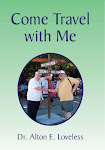
While visiting Wyoming in 1993 we had the possibly of stopping at The Buffalo Bill Museum which examines both the personal and public lives of W.F. "Buffalo Bill" Cody (1846-1917) and seeks to tell his story in the context of the history and myth of the American West.
However, more than this is the other collections in the Museum that interpret the history of the American cowboy, dude ranching, Western conservation, frontier entrepreneurship and, perhaps most importantly, the source of our concepts about the West. The museum records how Buffalo Bill, in an age without television or motion pictures became the world's foremost communicator about the American West.
Buffalo Bill's Wild West was a spectacular panorama of cowboys, Indians, trick shooters and specialty acts. He called his show "an educational exposition on a grand and entertaining scale."
The show ran for 30 years, from 1883 until 1913, touring the United States and Europe with legendary figures such as Sitting Bull and Annie Oakley. While it wasn't possible for millions of Americans to experience the West as he had, Cody brought it to their front doors.
If you are interested in learning more about Buffalo Bill and the West then you will find this a remarkable place to visit.
Of particular interest to me was The Cody Firearms Museum which houses the most comprehensive assemblage of American firearms in the world. The Winchester Collection, the heart of this museum, was transported from New Haven, Connecticut to Cody in 1976. Dedicated in 1991, but provides an expansive permanent home for the collection. However, virtually every significant manufacturer in the world is represented. Within the exhibits, visitors are able to trace the evolution of modern firearms technology from its earliest days through today's outstanding variations.
You may also view the Whitney Gallery of Western Art Digital Collections.
Learn about the outdoor sculpture conservation project funded by a grant from the Henry Luce Foundation.
Then there is the Plains Indian Museum which tells the significant story of the lives of the Plains Indian peoples, their cultures, traditions, values and histories, and the contexts of their lives today.
In the words of the Crow tribal historian Dr. Joseph Medicine Crow, the Museum is "a living, breathing place where more than just Indian objects are on display."
Since 1979 the Plains Indian Museum has been a leader in promoting public recognition of the importance of Plains Indian art due to its nationally significant collection. Visitors to the Plains Indian Museum learn, not only about the beautiful objects made by Indian people, but the stories of the people behind the objects and the special contexts in which these objects were made and used in daily and ceremonial life.
The majority of the collection is from the early reservation period, ca. 1880-1930, and relates primarily to Northern Plains tribes, such as the Lakota, Crow, Arapaho, Shoshone, and Cheyenne.
If you are a western fan, as I am, and want to really educate yourself, then don’t expect to do this in less than a day or two.
The west is a most important part of the history of our country and so much misinformation has venture over the past. Take time when you are in the area and get caught up.
They like all peoples look for a better life and a place of bliss beyond this life. They, like us, were looking for more than a cultural foundation. My prayer has always been that all people find what the spirit of a man craves for and for eternal better home.
“Abraham was confidently looking forward to a city with eternal foundations, a city designed and built by God.” --Hebrews 11:10





No comments:
Post a Comment